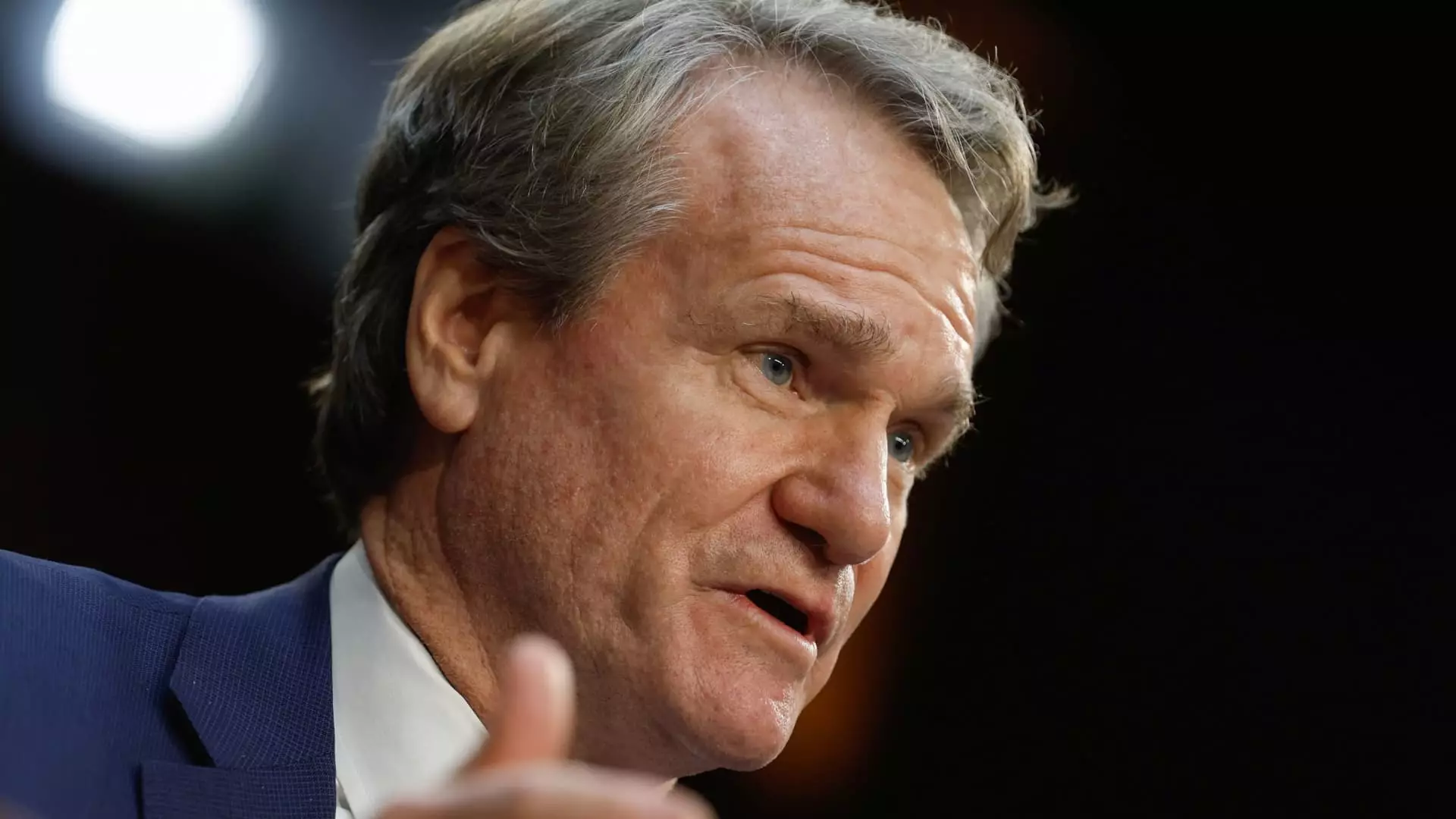The recent caution exhibited by U.S. consumers and businesses in their spending habits is indicative of the challenges posed by elevated inflation and interest rates. Bank of America CEO Brian Moynihan highlighted this trend during a financial conference in New York, pointing out that both households and small- to medium-sized businesses are scaling back their purchases across various sectors, from hard goods to software.
Consumer spending, which encompasses card payments, checks, and ATM withdrawals, has only grown by about 3.5% this year, amounting to roughly $4 trillion. This marks a significant slowdown from the robust 10% growth rate witnessed in May 2023. As Moynihan stated, the primary message from Bank of America’s clientele, vital components of the American economy, is one of caution and restraint.
The deceleration in spending that commenced last summer aligns with the lackluster growth environment prevalent from 2016 to 2018. The persisting concerns around inflation and borrowing costs, despite the Federal Reserve’s actions to combat rising prices, are a cause for economic unease. While Fed’s efforts have succeeded in preventing a recession and buoying stock market performance, consumers and businesses are still grappling with the repercussions.
High prices for goods and services have compelled Americans to adjust their spending habits, impacting various industries, including food retail. Reportedly, consumers are now visiting more grocery stores in a quest for discounts, signaling a shift towards thriftier behaviors. Moreover, the tepid overall spending growth is largely sustained by travel and entertainment sectors, while other expenditure categories have witnessed moderation.
Small- and medium-sized businesses are also feeling the effects of the economic slowdown. Moynihan revealed that business owners are optimistic about their ventures but are hesitant to expand, citing reduced hiring and slower equipment/software acquisitions. This cautious approach is reflective of the broader economic uncertainty stemming from inflation and interest rates.
Bank of America’s economists foresee that inflationary pressures will linger until the end of the following year, necessitating a prolonged period for stabilization. Furthermore, the expectation is that the Federal Reserve will commence interest rate cuts later in the year to support economic growth. Despite these challenges, the U.S. economy is projected to grow at a modest rate of around 2%, steering clear of a recessionary downturn.
The current economic landscape characterized by inflation and interest rate challenges has prompted both consumers and businesses to exercise prudence in their spending decisions. This cautious approach reflects a broader sentiment of uncertainty in the market, as individuals and companies navigate through the evolving economic conditions. Balancing the need for economic growth with the imperative of managing inflation remains a delicate task for policymakers and market participants alike.

